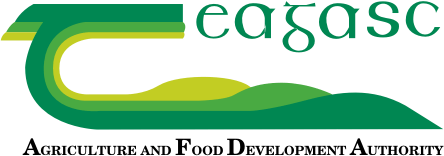
Supplementing lambs with minerals post weaning
Type Media Article
Over 55% of Irish sheep farmers supplement their lambs with minerals post weaning. Research has shown that cobalt and selenium are the main trace elements of concern. Athenry researcher Dr Tim Keady gives some advice.
A high level of lamb performance is readily achievable from grazed grass offered as the sole diet, and is necessary to minimise costs of production. However, many producers report that they are unable to finish lambs from grazed grass alone. Whilst the reasons for this inability are likely to include grassland management practices and parasite control, mineral (trace element) deficiency can be an issue.
Recent research results show that 51% of Irish sheep farmers supplement their lambs with minerals post weaning and that drenching is the favored method. These studies also show that most supplementation decisions are undertaken in the absence of veterinary advice or laboratory results.
Trace element deficiency
The concentration of trace elements in pasture varies during the grazing season. The main trace elements of concern are cobalt and selenium. Results from a recent survey undertaken on lowland sheep farms showed that, based on NRC requirements, herbage on
- 73 % of farms had deficient cobalt concentrations
- 11 and 89% of farms had deficient and marginal selenium concentrations, respectively
Cobalt is required by sheep for the synthesis of vitamin B12 in the rumen. Symptoms of deficiency include loss of condition, poor fleece quality, ears become dry and scaly (photosensitisation), loss of appetite, runny eyes with tear staining on the face, and raised worm counts (immune suppression). As cobalt is not stored in the body and is needed in the rumen, a continuous supply is required throughout the grazing season for vitamin B12 production.
Selenium deficiency is associated with poor lamb performance and white muscle disease. Its metabolism is closely related to vitamin E which acts as an antioxidant.
Athenry study
In a recent study the effects of supplementation with cobalt, either alone or in combination with vitamin B12 and selenium, on lamb performance post weaning were evaluated. There were 3 treatments: no supplementation (control), cobalt supplemented alone, or a combination of cobalt, vitamin B12 and selenium. The lambs received their treatments, by drench, every 2 weeks. Lambs were drafted for slaughter at regular intervals when they had achieved target liveweight.
During the first 7 weeks of the study (July/August) trace element supplementation had no effect on growth rate. However, as the grazing season progressed supplementation with cobalt, either alone or in combination with vitamin B12 and selenium, increased lamb weight gain. Consequently trace element supplementation increased average weight at drafting and carcass weight by 2.1 kg and 1.4 kg, respectively (Table 1). There was no benefit from including vitamin B12 and selenium with cobalt under conditions of the Athenry farm (Table 1).
Conclusions
- Supplementation with cobalt increased lamb performance and increased drafting rate thus reducing age at slaughter
- Response to cobalt supplementation increased as the season progressed
- There was no benefit to including vitamin B12 and selenium with cobalt

